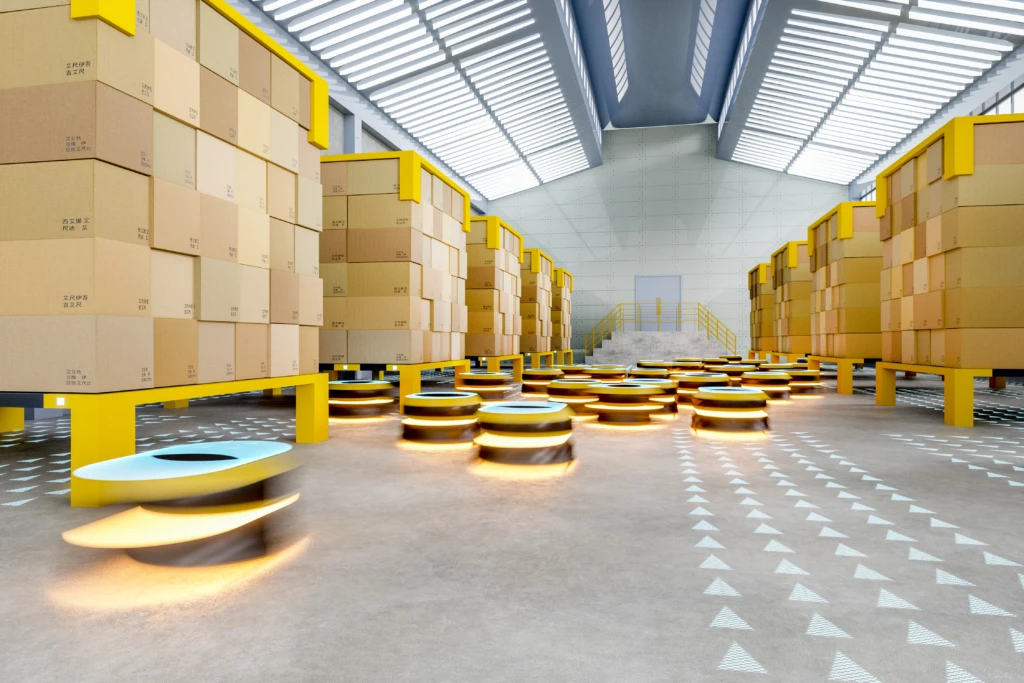
3 retail trends driving adoption of micro-fulfillment centers

What is a micro-fulfillment center?
Micro-fulfillment centers (MFCs), are small, tech-enabled warehouse facilities built near consumers—sometimes even within stores. They allow retailers to analyze inventory trends and quickly pivot to meet the market’s changing demands. Many retailers are evolving to a hub-and-spoke distribution model, where existing distribution centers serve as hubs and smaller outlets in closer proximity to consumers act as the spokes.
Learn more about Microsoft’s vision to reimagine retail with Microsoft Cloud for Retail.
Trends driving MFC adoption
With same-day delivery becoming table stakes in the e-commerce experience, micro-fulfillment centers may be the key to helping retailers succeed in the face of ever-increasing consumer expectations. A typical MFC can be as small as one-third the size of a typical supermarket but can also scale up quickly. MFCs optimize space by strategically stacking goods and leveraging robots for product retrieval, thus reducing labor costs, and increasing fulfillment throughput. And by bringing fulfillment centers closer to the end consumer, retailers can better manage their inventory and more effectively sell perishable products through their online channels.
Let’s look at some of the retail trends driving the adoption of micro-fulfillment centers:
1. Last-mile delivery
Traditional and manual fulfillment processes are struggling to keep pace with the rising demand for fast delivery or curbside pick-ups. Last-mile delivery plays a significant role in the overall logistics ecosystem and accounts for a significant cost. MFCs can leverage artificial intelligence (AI) to direct online orders to the optimal fulfillment location and use automation at various stages, from sorting to packing to last-mile delivery, to significantly speed up the fulfillment process and help reduce costs.
2. Dark stores
Dark stores are traditional retail outlets that have been converted to local fulfillment centers. As e-commerce adoption is accelerating, and in-store customer visits are decreasing, retailers are increasingly considering converting a percentage of their stores to dark stores. Stores already equipped with refrigerated and frozen sections can help meet increases in cold supply chain requirements to fulfill online grocery orders. MFCs in dark store locations can also fulfill all-important impulse purchases, made when orders are picked up.
3. Changing product assortments
As the volume of groceries being purchased online increases, grocers are facing a new challenge: managing dry goods, refrigerated, and frozen inventories. Because MFCs are hyperlocal, they can improve inventory storage and management, as well as manage unique assortments in each location. Furthermore, the combination of connected devices and fulfillment automation enables retailers to track inventory and shelf-life in real time. MFCs are well-suited for using predictive technologies that can help keep in-demand items stocked while limiting losses on perishable items.
MFCs are poised to transform the retail landscape
With consumer demand shifting to online shopping, and likely to continue to take brick-and-mortar traffic, utilizing MFCs in operational or dark stores can help retailers transform to meet changing consumer needs. Using efficiency-boosting technologies such as connected devices, robotics, and automation can lower costs, increase agility, and enable faster last-mile delivery. Additionally, automated systems can reduce the reaction time between supply chain trends, product demand, and product availability, including disruptions.
Meet a Microsoft partner who can make it happen
Attabotics is the world’s first 3D robotics supply chain system for modern commerce. Inspired by the framework of ant colonies, Attabotics replaces the rows and aisles of traditional fulfillment centers with a patented, highly scalable storage structure and robotics shuttles utilizing both horizontal and vertical space, reducing a company’s warehouse needs by up to 85 percent. By empowering retailers to place fulfillment centers near high-density urban areas, Attabotics can improve the speed of delivery for customers and reduce costs associated with local fulfillment. With an increased demand for online ordering, retailers are looking for alternatives to third-party grocery delivery providers to drive brand loyalty and control the delivery experience for their consumers. Attabotics’ fast time to implement and cost-effective system tools give retailers what they need to compete and survive in a dramatically shifting market.
Discover how Microsoft Cloud for Retail helps connect your customers and data to provide seamless experiences across the shopper journey.




